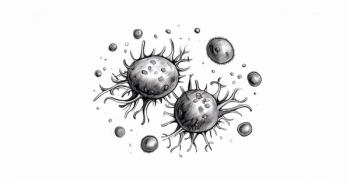
Shorter CAR T Monitoring Safe After Early CRS/NE Resolution
Olalekan O Oluwole, MD, MBBS, discusses a study investigating shorter monitoring times post CAR T therapy.
A study presented at the 2025 Transplantation and Cellular Therapy Tandem Meetings investigated the optimal monitoring period for patients with relapsed/refractory large B-cell lymphoma (R/R LBCL) who received axicabtagene ciloleucel (axi-cel; Yescarta) CAR T-cell therapy.
Current protocols require patients to remain near a certified facility for 4 weeks post infusion due to the risk of cytokine release syndrome (CRS) and neurological events (NEs). The researchers, including
To test this, Oluwole, associate professor, medicine, hematology/oncology, Vanderbilt Institute for Infection, Immunology and Inflammation, Vanderbilt University Medical Center, and colleagues developed a classification algorithm using data from the ZUMA-7 (NCT03391466) trial and validated it using the ZUMA-1 (NCT02348216) and ZUMA-24 (NCT05459571) trial datasets. The algorithm defined "durable resolution" as 3 consecutive days without CRS or NEs after a minimum of 2 weeks of monitoring. They then assessed the risk of new or recurrent CRS/NEs in patients who achieved this durable resolution at or before 2 weeks, and those who achieved it between 2 and 4 weeks.
The results showed that in the ZUMA-7 training cohort, 53% of patients
The study concludes that patients with R/R LBCL who achieve a durable resolution of CRS/NEs within the first 2 weeks of axi-cel infusion are at a low risk for new onset or recurrence of these toxicities. This suggests that a risk-based monitoring approach, where patients with early and sustained resolution of CRS/NEs could have a reduced monitoring period, may be feasible. This could potentially improve patient access and reduce the burden on health care resources while maintaining patient safety.








































